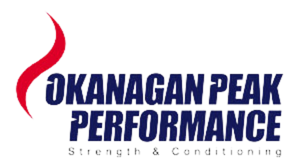Are BLTs Sabotaging Your Results?
At Okanagan Peak Performance Inc we work with a variety of clientele that want to look, feel or play better. And these are quite varied goals. But one thing is in common with these three groups.
And that’s the goal of getting lean.
Sure we get the occasional male teen that is looking to increase his mass. But he wants to get bigger through the chest, arms, legs and back and not necessarily bigger at the waist. As one young male client put it ‘I want to look more like Captain America’.
Getting lean is important for the aesthetic population as this helps them feel better. They have more confidence going to the beach and wearing less clothing. It helps motivate them to do more in their training and spills over to other areas of their lives.
For athletes, being lean improves their relative strength and power. In other words if they can produce the same force at a lighter weight this will be an advantage in competition. Imagine an athlete sprinting with a piano strapped to their back and with the piano removed. Obviously dropping mass that doesn’t help will be an advantage.
And for the group that wants to feel better getting lean is helpful as well. This is important for all the weight bearing joints and the effect it can have on our posture. With our knees every extra pound of body weight is equivalent to four extra pounds of pressure on the knees. Getting lean is one of the best things an individual can do to reduce knee pain.
So if we can agree that getting lean is important and applies for everyone from those wanting to look, feel and play better, than why can it be so hard?
Well one of the reasons might be BLTs. And I don’t mean sandwiches. Instead I’m talking about bites, licks and tastes.
BLTs can quickly and easily sabotage a plan to get lean because these calories aren’t counted when looking at our daily nutritional habits. People don’t enter BLTs in my fitness pal. They don’t enter these in their nutritional journal. They don’t report these when they sit down with their doctor or dietitian.
BLTs get forgotten and not reported.
So where do BLTs pop-up during the day? Consider the following scenarios.
- One parent makes the majority of the meals and samples the food as it is being prepared. A taste of the sauce here. A lick of the spoon there.
- Getting kids to eat their meals can be difficult. And sometimes you have to know when to allow them to be excused from the table. As a parent it’s not easy to scrape good food into the garbage. Sometimes it’s just easier to finish their last few bites before cleaning the plate.
- Imagine going out to dinner. And the part comes to decide on dessert. It’s not uncommon for one spouse to decline immediately while the other selects a dessert. The server returns with the ordered dessert plus two spoons. The spouse that didn’t order dessert may take a taste or two from the plate.
- Have you ever been to the movies and one friend orders popcorn and the other doesn’t? It’s rare for the friend that didn’t order popcorn to not reach in the bag at least once during the show.
- Picture going to a social gathering at a friend’s house. Maybe it’s a Super Bowl party and there are lots treats and things to nibble on. As everyone is settled in watching the game you don’t want to disrupt the host and go through the food line. Instead you hang out by the food watching the game casually dipping a chip into a seven layer dip and snacking on nuts.
So how many extra calories can BLTs add up to? Some estimates have them as high as 600 calories in a day. Imagine if your plan allowed for 1800 calories in a day and you added another 600 calories in BLTs. You would have over eaten by 33%!
It makes it pretty hard to hit our goal of getting lean when we’re the intake is that much out of balance.
Going forward make sure to be aware of all the energy we consume in a day. If it goes in our mouth it counts. It doesn’t have to full servings. Even BLTs can add and put you over on your daily caloric consumption.











